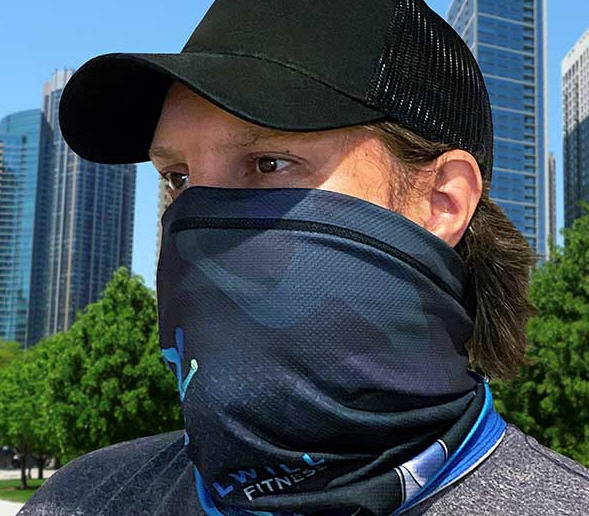Gaiter Makers Take Issue With Duke Mask Study
- Olivia
- Aug 14, 2020
- 3 min read
Updated: Aug 17, 2020
Not all neck gaiters are created equal. You might have seen the WRAL segment regarding neck gaiters. After a Duke study testing various types of face coverings went viral, we were immediately asked- am I safe? Even WRAL is saying- hey, we did not test them all!

The researchers at Duke tested 14 types of coverings, from N95s, cloth masks, bandanas and neck gaiters. They used a simple setup that includes a laser, cellphone and box to determine how many respiratory droplets passed through each fabric. The initial study noted that the gaiter the researchers tested proved less effective at helping to curb the spread of the coronavirus than wearing no mask at all.
The gaiter they tested was a thin poly-spandex fabric, which does not tell the entire story. In our industry, there is always abundant choice. Often items that appear the same are not equal. The materials used and construction of the product can produce vastly different results. We see quality differences occur frequently, that the average consumer doesn't because we've learned what to compare in the details. Samples are also an important component in comparing new products in the market. We have a lot of masks & gaiters here in our showroom to compare.
You might recall our own 24 hour ice test a few years back, when we tested popular Yeti style tumblers to see who performed. We started testing masks and gaiters in March. We performed a “flame test” on a gaiter to show the fabric’s droplet-inhibiting properties as few weeks ago, before Duke's test! Since that test, we learned most tests involve a lit flame 2 feet away, to determine if you can blow out the flame. We were closer and while it was odd to try, you'll hear the giggles, you can see the flame stayed lit.
What should you know about gaiters?
Gaiters were developed around 10 years ago, in consultation with winter sports enthusiasts. The gaiter design is essentially a long mask, fabric cut a different way to offer protection. Gaiters were designed to be stretchy and long, so they could be pulled up quickly & doubled up for extra protection for outdoor sports.
A similar analogy to gaiters construction would be a tote bag. The type of fabric, the grammage, weight or weave will make a huge difference in the strength and durability of a bag. Similarly in a gaiter, there are numerous options in polyester, spandex, Lycra or blend fabrics. Besides the thicknesses and material content, the fit, construction and way the individual wears the gaiter plays a part in effectiveness.
We'd also like to stress that looks can be deceiving. In fact, it's the primary reason we have a showroom full of samples to compare. We encourage our clients to meet with us or have us send samples, to compare first hand. Our industry partners would like to see Duke researchers to go back and test a wider variety of the neck bands. We found this study today with a quick internet search.
Note: Duke researchers say their study was never meant to be a comprehensive test of all types of masks and the materials they’re made of, rather, to demonstrate how easy it would be to test their effectiveness. WRAL has posted several statements since the initial broadcast around the fact that not all gaiters were tested or ineffective.







Comments